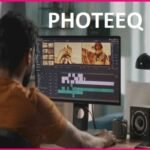Introduction
Harmonicode is an interdisciplinary movement that mixes coding and track composition. By remodeling code into musical expression, it allows builders and artists to collaborate, perform, and create algorithmic tracks in actual-time. In 2025, this concept is greater applicable than ever, mannered to improvements in AI, net audio technology, and a growing network of stay coders.
In this complete guide, we’re capable of discovering the middle philosophy, capabilities, tools, systems, and use times of Harmony code, while moreover supplying realistic insights and tabulated records that will help you navigate this progressive environment.
1. What is Harmonicode?
Harmony code refers to a coding-centric technique that transforms traces of code into musical compositions. This approach is powered through systems that interpret code in real-time, generating sound based totally mostly on programming syntax. Unlike traditional DAWs (Digital Audio Workstations), Harmony code systems allow real-time manipulation, live regular overall performance, and generative compositions.
Examples include:
- Sonic Pi
- TidalCycles
- FoxDot
- ORCA
These gears allow clients to create, tune the usage of code, take a look at rhythm and concord, and even assemble complex sound systems.
2. Core Philosophy of Harmonicode

The philosophy behind Harmonicode is to democratize song creation by fusing computational superb judgment with musical concept. The middle ideals are:
- Music is a language: Like code, track has syntax and shape.
- Code is revolutionary: Programming can be expressive and performative.
- Learning is interdisciplinary: Harmonicode teaches coding and music concurrently.
- Open-supply collaboration: Many systems are community-evolved and unfastened.
3. Key Features and Capabilities
| Feature | Description |
|---|---|
| Live Coding | Perform music by writing and modifying code in real time. |
| Cross-Platform | Works on macOS, Windows, Linux, and browser-based environments. |
| MIDI and OSC Integration | Send signals to hardware instruments and synthesizers. |
| AI Music Generation | Use AI models for composition and pattern generation. |
| Visual Feedback | Visual representation of rhythms and waveforms. |
| Modular Sound Design | Build and modify synthesizers using code. |
4. Tools and Platforms Supporting Harmonicode
| Tool | Language Base | Features | Best For |
| Sonic Pi | Ruby-like | Beginner-friendly, great for education | Students, Teachers |
| TidalCycles | Haskell | Rhythm-based, pattern-heavy | Advanced Coders, Performers |
| FoxDot | Python | Easy syntax, SuperCollider backend | Intermediate Users |
| ORCA | Custom | Esoteric visual interface, MIDI routing | Visual Thinkers, Experimenters |
| Gibber | JavaScript | Browser-based, live visuals and audio | Web Developers, Creatives |
| Hydra | JavaScript | VJing tool, synchronizes visuals and music | VJs, Multimedia Artists |
5. How Harmonicode Works
Harmonicode systems generally comply with this go together with the glide:
- Input: Write code that defines notes, rhythms, and synths.
- Interpretation: The surroundings parses and interprets the code.
- Sound Output: Generates tune through inner audio engines or outside synths.
- Real-Time Feedback: Users pay interest right away and can modify live.
For example, a critical rhythm in Tidal Cycles:
d1 $ sound “bd sn cp”
This generates a repeating bass drum, snare, and clap pattern.
6. Educational Benefits
Harmonicode is widely applied in STEAM (Science, Technology, Engineering, Arts, Mathematics) schooling.
| Educational Value | Description |
| Teaches Programming Basics | Variables, loops, functions, and logic. |
| Enhances Music Theory | Teaches scales, timing, chords, and harmony. |
| Encourages Creative Thinking | Blends logic with artistry. |
| Promotes Problem Solving | Real-time debugging enhances critical thinking. |
7. Use Cases and Applications
- Live Performance: Algoraves and experimental suggestions.
- Music Education: Schools and coding bootcamps.
- Installation Art: Interactive exhibits and generative soundscapes.
- AI Research: Machine-generated music experiments.
- Therapeutic Use: Music treatment training the use of adaptive sound.
8. Harmonicode in Live Performances

Live coding has come to be a way of lifestyles with sports like Algorave showcasing actual-time song technology. Artists perform with projectors showing their code, developing each an audio and visible revel in.
Popular venues:
- Node Festival
- NIME (New Interfaces for Musical Expression)
- Live Coding meetups global
9. Integration with AI, MIDI, and Web Audio API
| Integration Target | Description |
| AI Models (GPT, Magenta) | Generate harmonies, melodies, or beats based on prompts. |
| MIDI Controllers | Map physical devices to coded commands for hybrid setups. |
| Web Audio API | Enables browser-based music creation. |
| OSC Protocols | For sending real-time signals between applications and devices. |
10. Advantages and Limitations
Advantages:
- Full control over every sound parameter.
- Educational fee in the direction of disciplines.
- Encourages improvisation and experimentation.
Limitations:
- Steep studying curve for non-coders.
- Limited graphical interfaces.
- Requires technical setup (e.G., SuperCollider, JACK).
11. Harmonicode vs Traditional Music Production
| Aspect | Harmony code | Traditional DAWs |
| Interface | Code-based | GUI-based |
| Flexibility | Highly flexible, programmable | Limited by plugins and UI |
| Accessibility | Requires coding knowledge | Easier for musicians |
| Performance | Ideal for live coding | Better for studio-quality production |
12. Future of Harmonicode
By 2025 and beyond, count on the following traits:
- Integration with AR/VR for immersive performances.
- Cross-platform mobile coding apps.
- AI-more quality sample generators.
- Decentralized jamming over blockchain networks.
- Educational systems gamifying Harmony code getting to know.
13. Community Resources and Learning Materials
| Resource | Type | Link |
| Sonic Pi Guide | Documentation | https://sonic-pi.net |
| TidalCycles Docs | Official site | https://tidalcycles.org |
| FoxDot Wiki | Community resource | https://foxdot.org |
| Algorave | Event network | https://algorave.com |
| GitHub | Code repositories | Search “live coding music” |
14. Frequently Asked Questions (FAQs)
Q: Is Harmony code a single software?
A: No, it’s far from an umbrella term shielding machine that uses code to create tracks.
Q: Do I want to tune my ideas?
A: It allows, but many devices are newbie-first-rate.
Q: Can I use Harmony code commercially?
A: Yes, many artists launch albums and carry out the use of it.
Q: Does Harmony code require set up?
A: Some machines are browser-primarily based totally, but many require installations.
15. Conclusion
Harmonicode isn’t only a novelty—it is a motion redefining how we recognize music introduction. It bridges the gap between the analytical and the creative, offering a platform for limitless experimentation. As more equipment emerges and businesses broaden, the fusion of code and music is prepared to end up a mainstream medium for artists, educators, and technologists alike.
Related Post:


